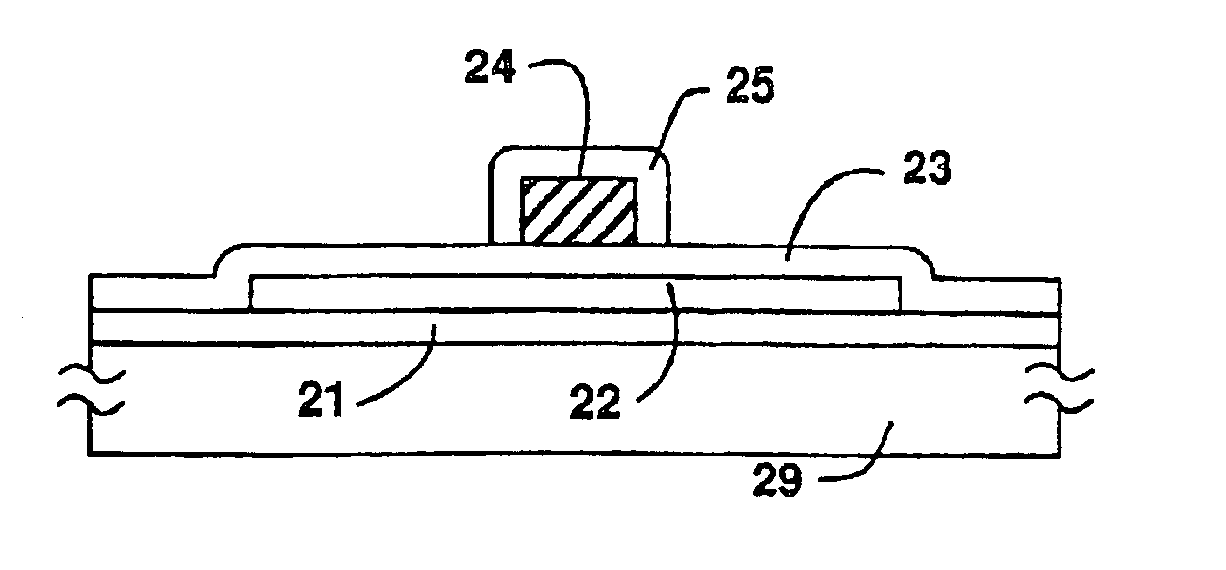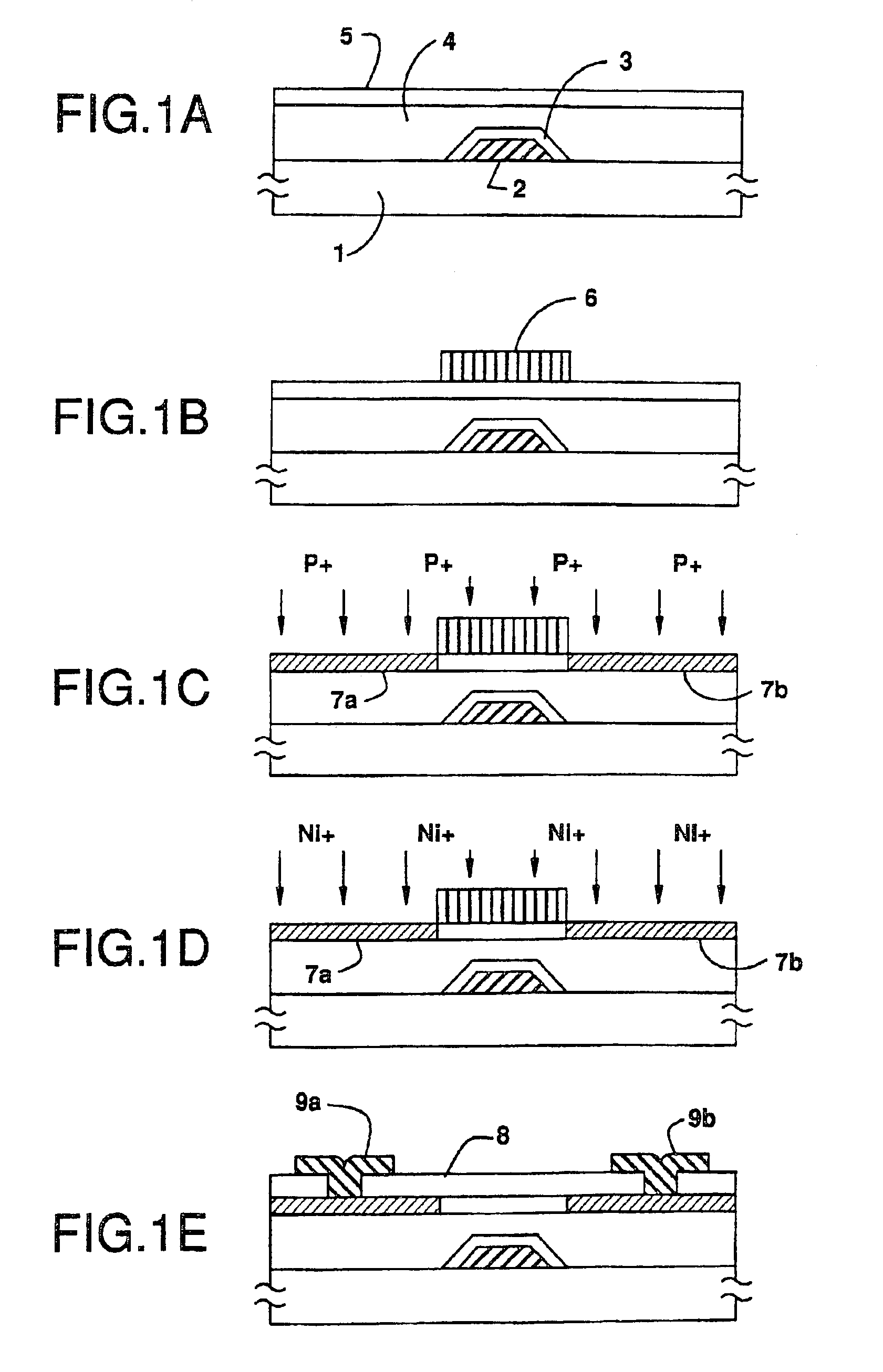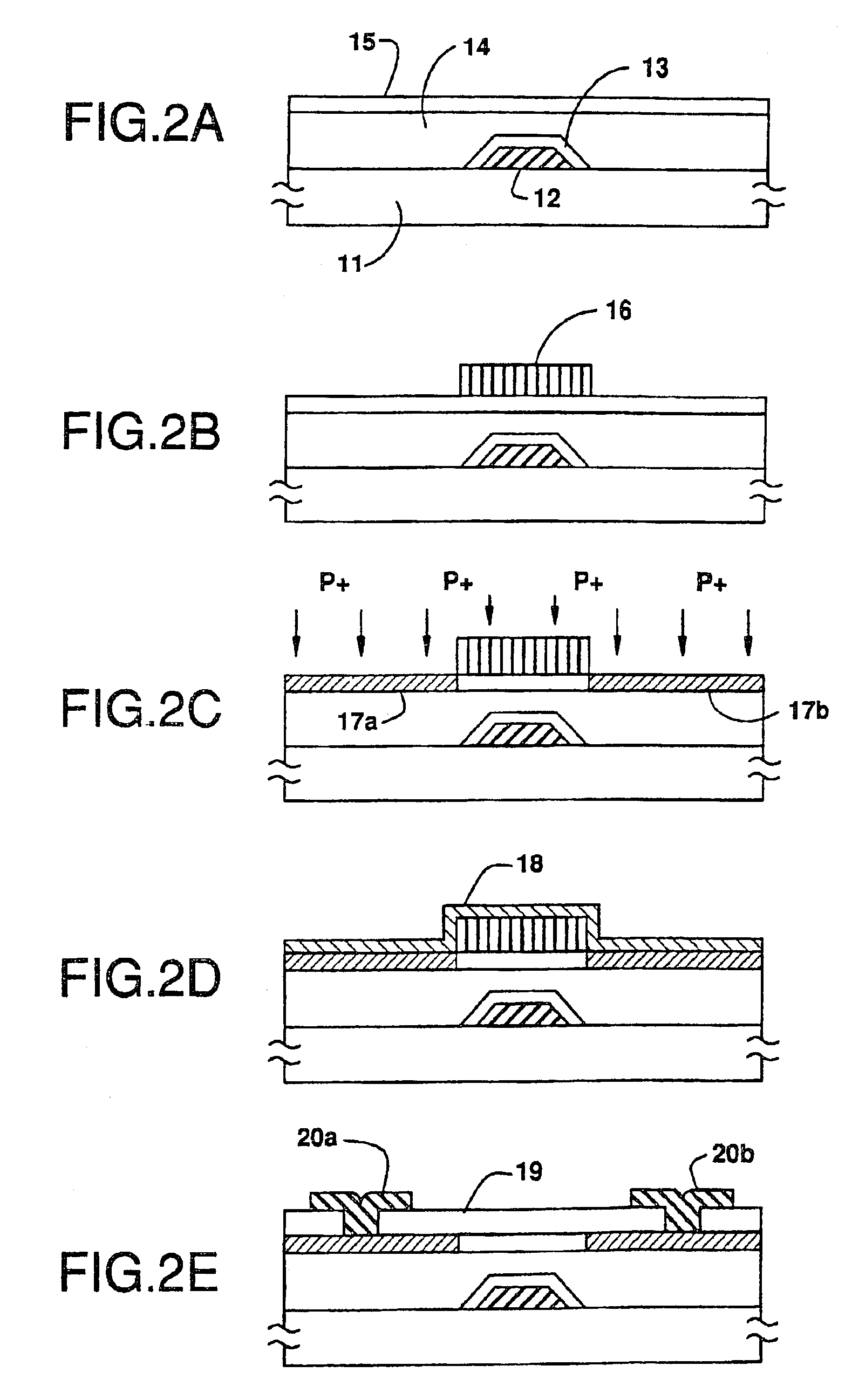Method of manufacturing a semiconductor device that includes heating the gate insulating film
a technology of gate insulating film and manufacturing method, which is applied in the direction of semiconductor devices, electrical appliances, transistors, etc., can solve the problems of unfavorable silicon of the catalyst materials enumerated above, and achieve the effect of shortening the duration of tim
- Summary
- Abstract
- Description
- Claims
- Application Information
AI Technical Summary
Benefits of technology
Problems solved by technology
Method used
Image
Examples
example 1
[0074]FIG. 1 shows the cross section view of the step sequential structures obtained by a process according to an embodiment of the present invention. Referring to FIG. 1, a tantalum film was formed at a thickness of from 3,000 to 8,000 Å, for example, at a thickness of 5,000 Å on a Corning #7059 glass substrate 1, and was patterned to form a gate electrode 2. Then, an anodic oxide film 3 was formed at a thickness of from 1,000 to 3,000 Å, for example, at a thickness of 2,000 Å by anodically oxidizing the surface of the tantalum film. Then, a silicon nitride film 4 was deposited by plasma CVD at a thickness of from 1,000 to 5,000 Å, for example, at a thickness of 1,500 Å. This step was followed by the deposition of an intrinsic (I-type) amorphous silicon film thereon by plasma CVD to a thickness of from 200 to 1,500 Å, for example, to a thickness of 500 Å in this case. The resulting amorphous silicon film was patterned to obtain a semiconductor region 5 as shown in FIG. 1(A).
[0075]T...
example 2
[0081]FIG. 2 shows the cross section view of the step sequential structures obtained by a process according to an embodiment of the present invention. Referring to FIG. 2, a tantalum film was formed at a thickness of from 3,000 to 8,000 Å, for example, at a thickness of 5,000 Å on a Corning #7059 glass substrate 11, and was patterned to form a gate electrode 12. Then, an anodic oxide film 13 was formed at a thickness of from 1,000 to 3,000 Å, for example, at a thickness of 2,000 Å by anodically oxidizing the surface of the tantalum film. Then, a silicon nitride film 14 was deposited by plasma CVD at a thickness of from 1,000 to 5,000 Å, for example, at a thickness of 1,500 Å. This step was followed by the deposition of an intrinsic (I-type) amorphous silicon film thereon by plasma CVD to a thickness of from 200 to 1,500 Å, for example, to a thickness of 500 Å in this case. The resulting amorphous silicon film was patterned to obtain a semiconductor region 15 as shown in FIG. 2(A).
[0...
example 3
[0088]FIG. 3 shows the cross section view of the step sequential structures obtained by a process according to another embodiment of the present invention. Referring to FIG. 3, a 2,000 Å thick silicon oxide film ill was formed by sputtering as a base film on a Corning #7059 glass substrate 110. Then, an intrinsic (I-type) amorphous silicon film was deposited thereon by plasma CVD to a thickness of from 500 to 1,500 Å, for example, to a thickness of 1,500 Å. The amorphous silicon film was then crystallized by annealing at 600° C. in nitrogen atmosphere for a duration of 48 hours. After annealing, the silicon film was patterned to form an island-like silicon region 112, and a 1,000 Å thick silicon oxide film 113 was deposited thereon by sputtering as a gate insulating film. The sputtering process was performed in an atmosphere containing oxygen and argon at an argon to oxygen ratio of not higher than 0.5, for example, at a ratio of 0.1 or lower, using silicon oxide as the target. The,...
PUM
 Login to View More
Login to View More Abstract
Description
Claims
Application Information
 Login to View More
Login to View More - R&D
- Intellectual Property
- Life Sciences
- Materials
- Tech Scout
- Unparalleled Data Quality
- Higher Quality Content
- 60% Fewer Hallucinations
Browse by: Latest US Patents, China's latest patents, Technical Efficacy Thesaurus, Application Domain, Technology Topic, Popular Technical Reports.
© 2025 PatSnap. All rights reserved.Legal|Privacy policy|Modern Slavery Act Transparency Statement|Sitemap|About US| Contact US: help@patsnap.com



